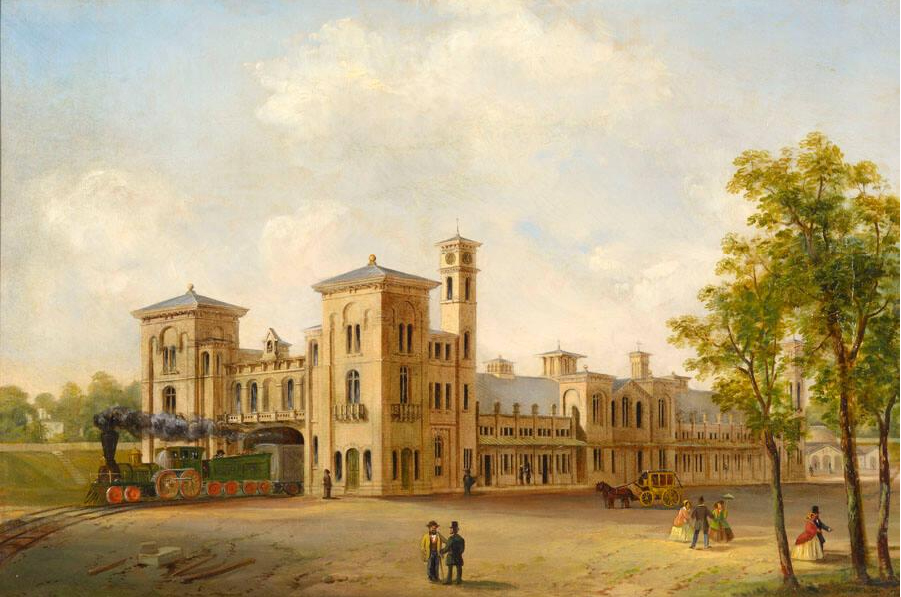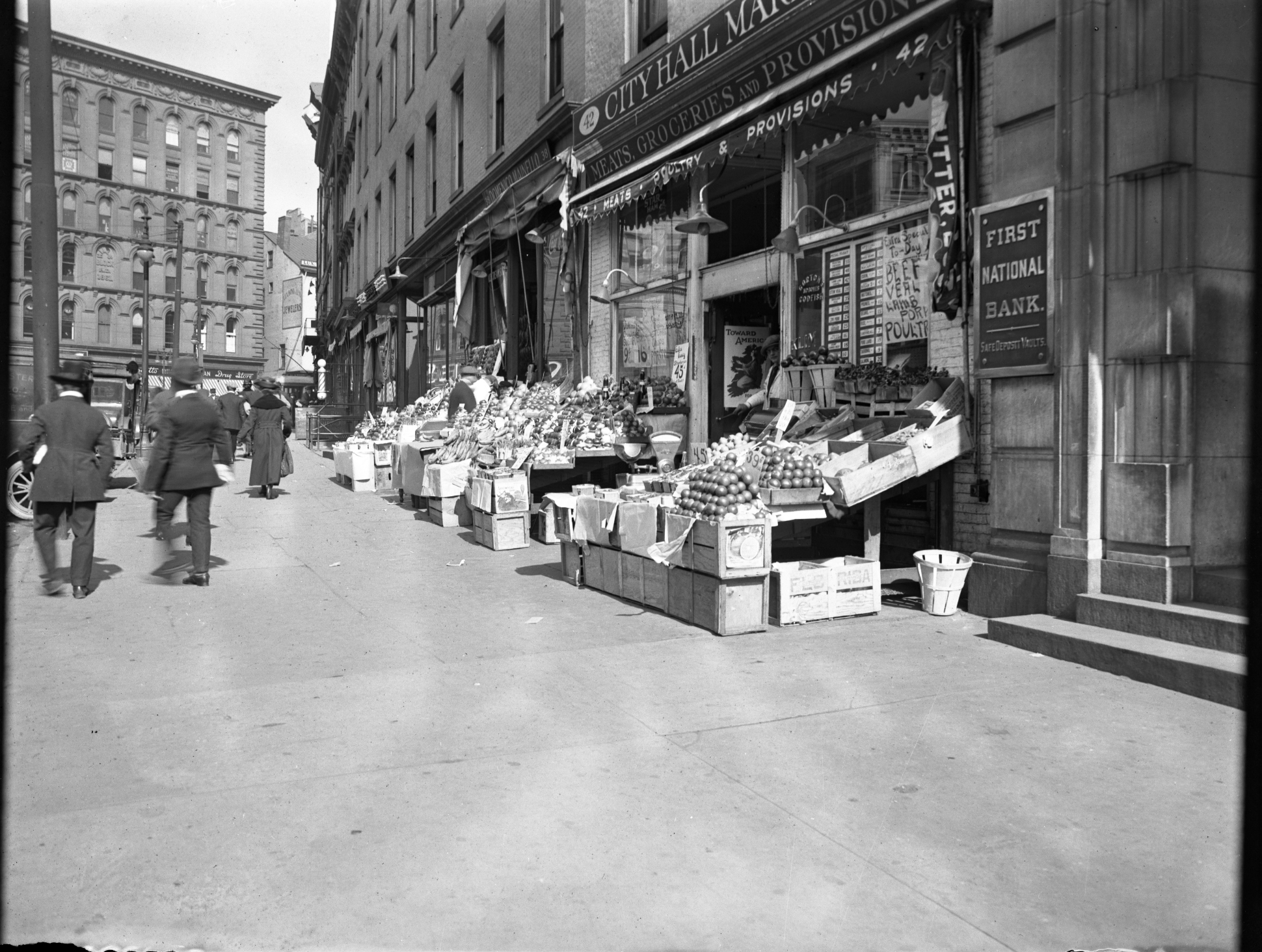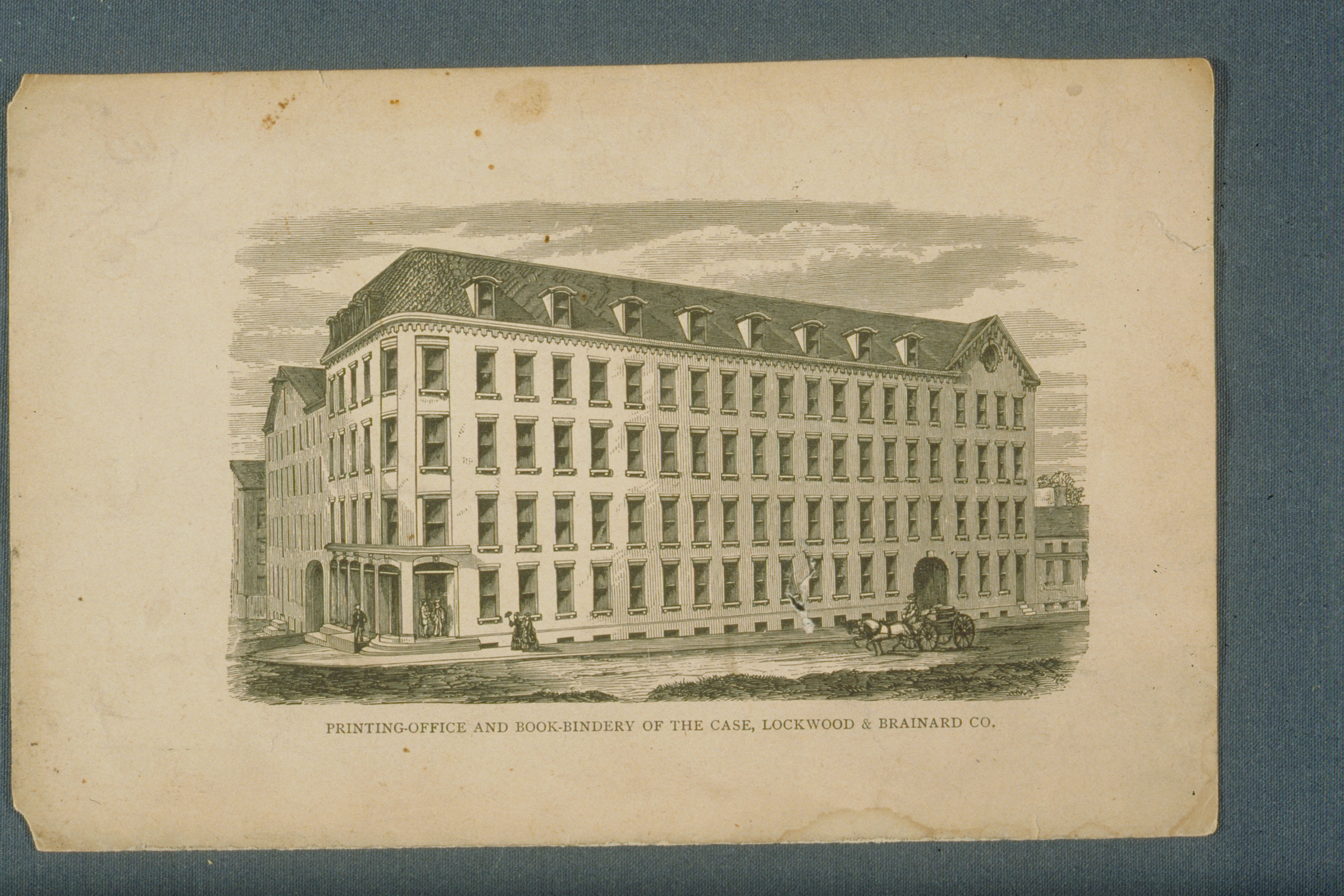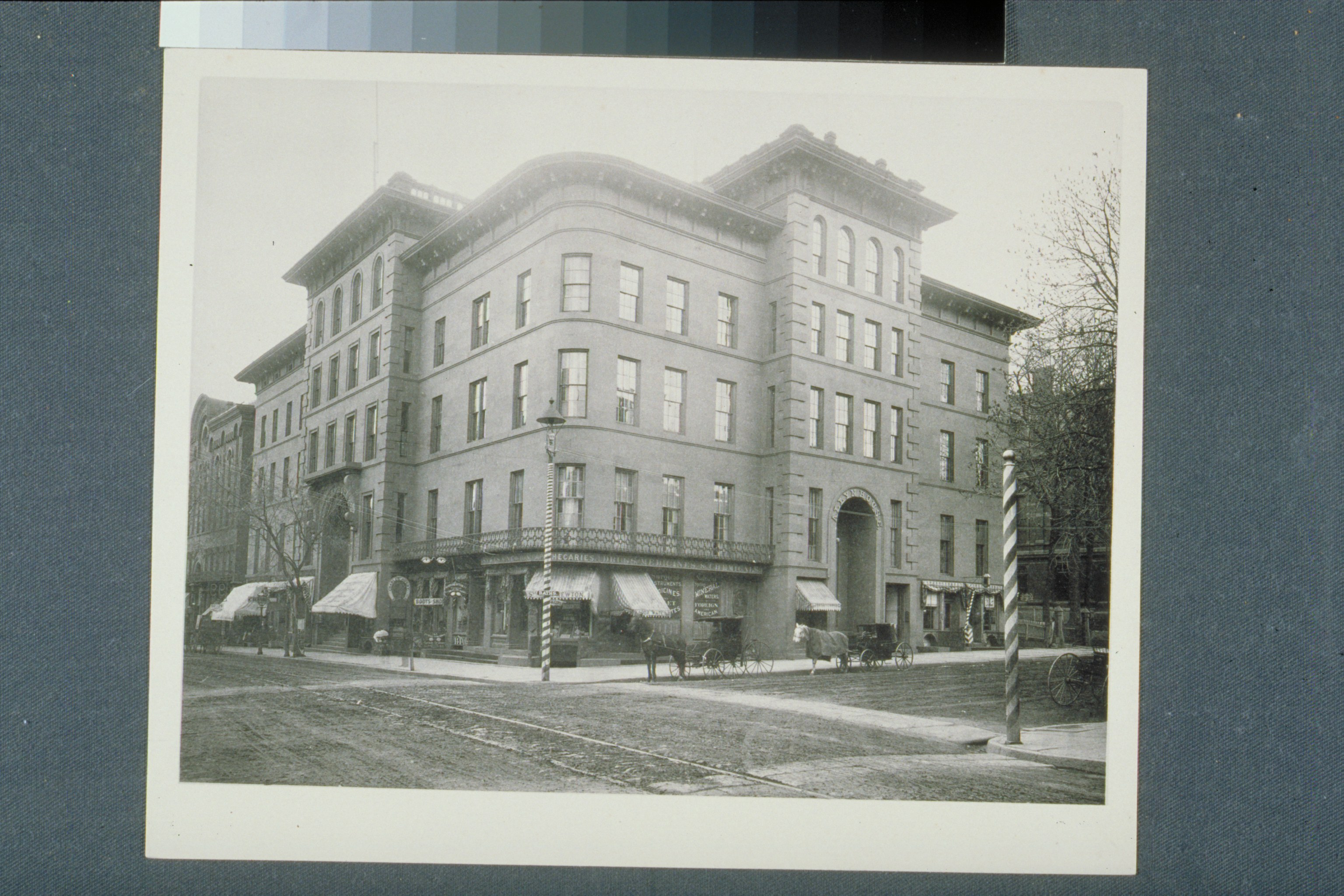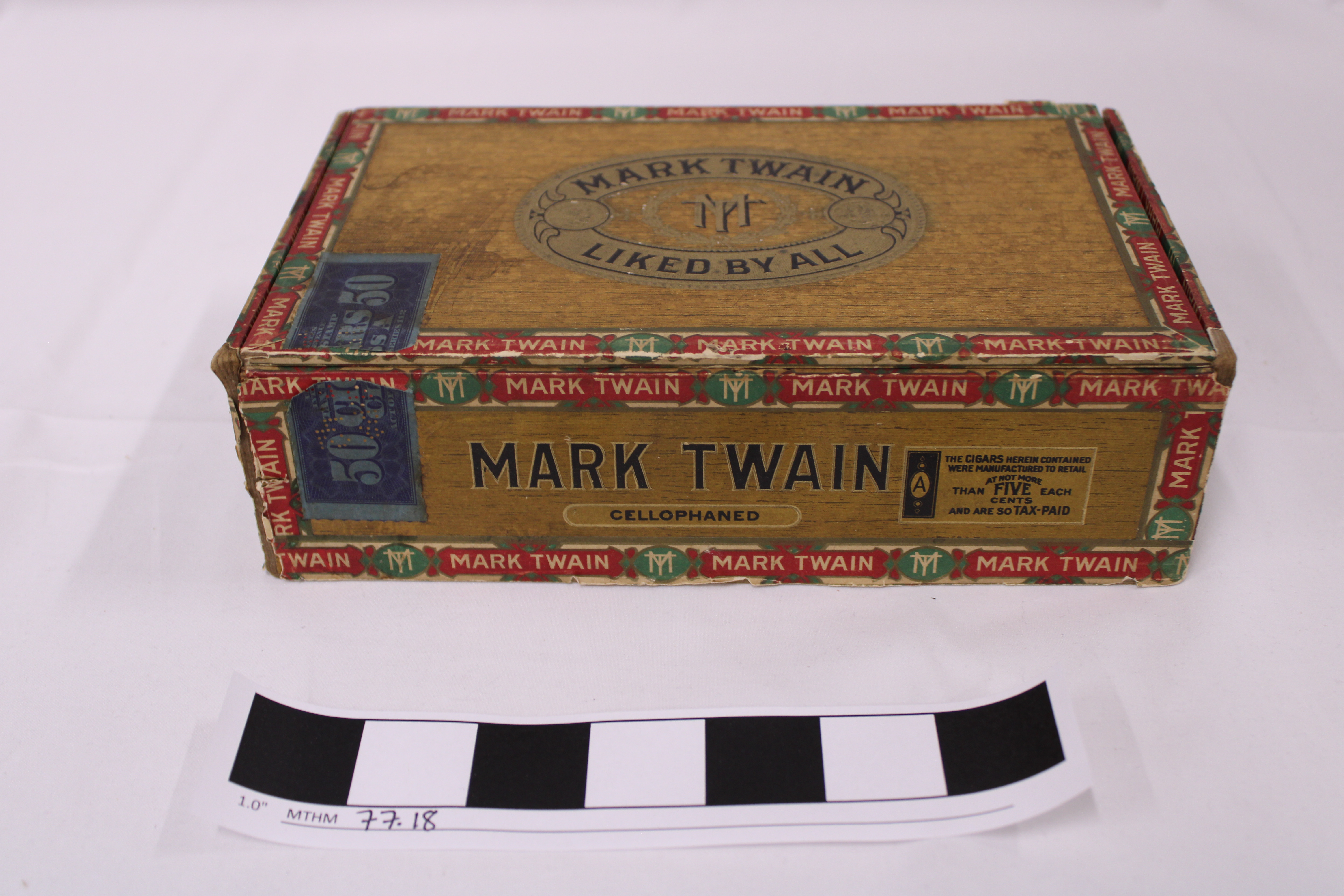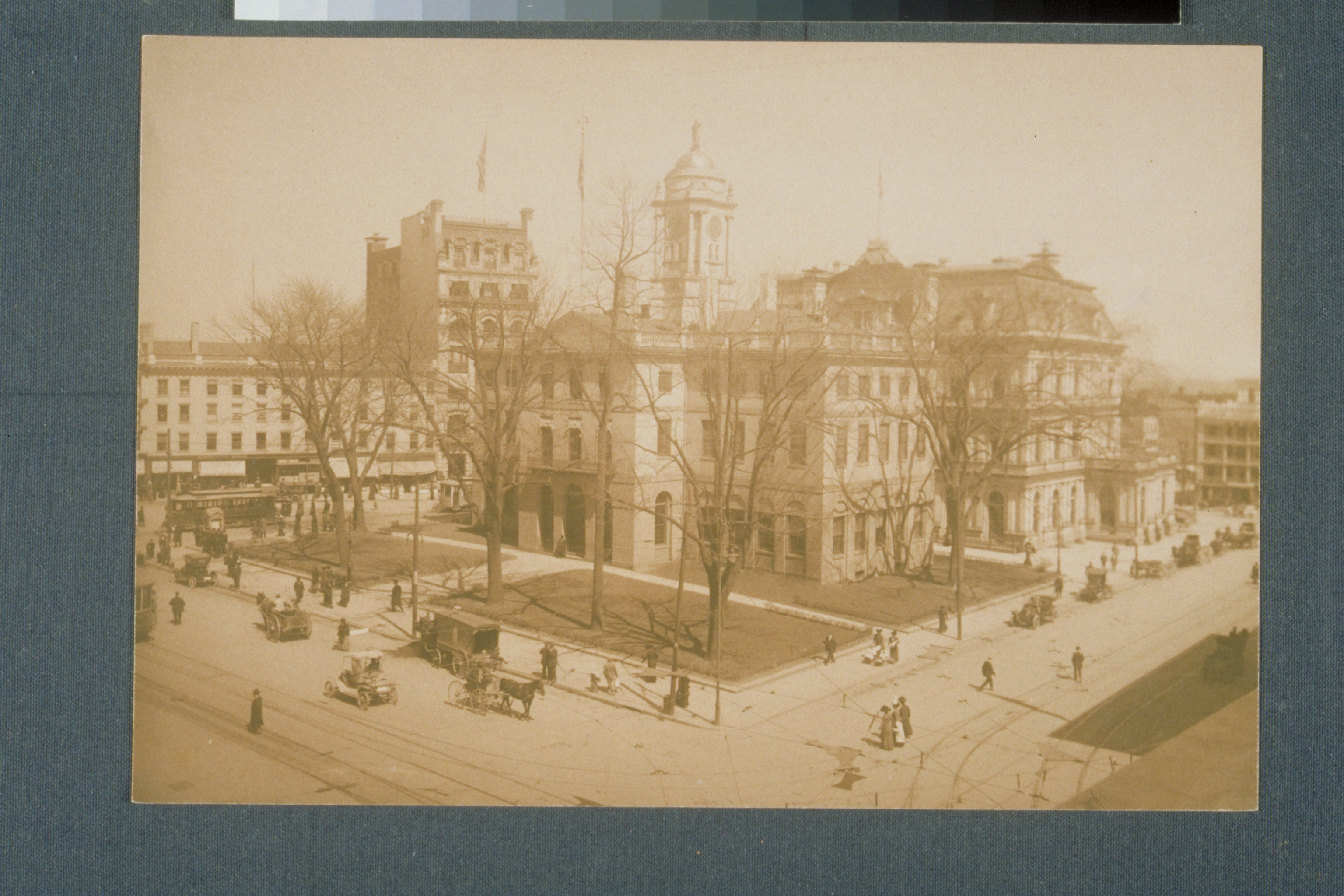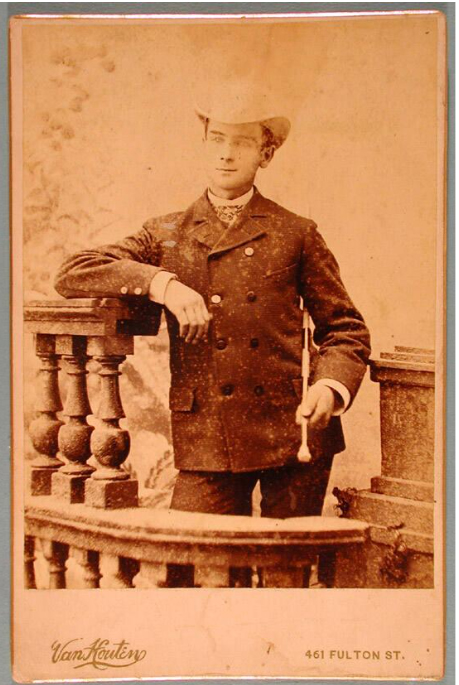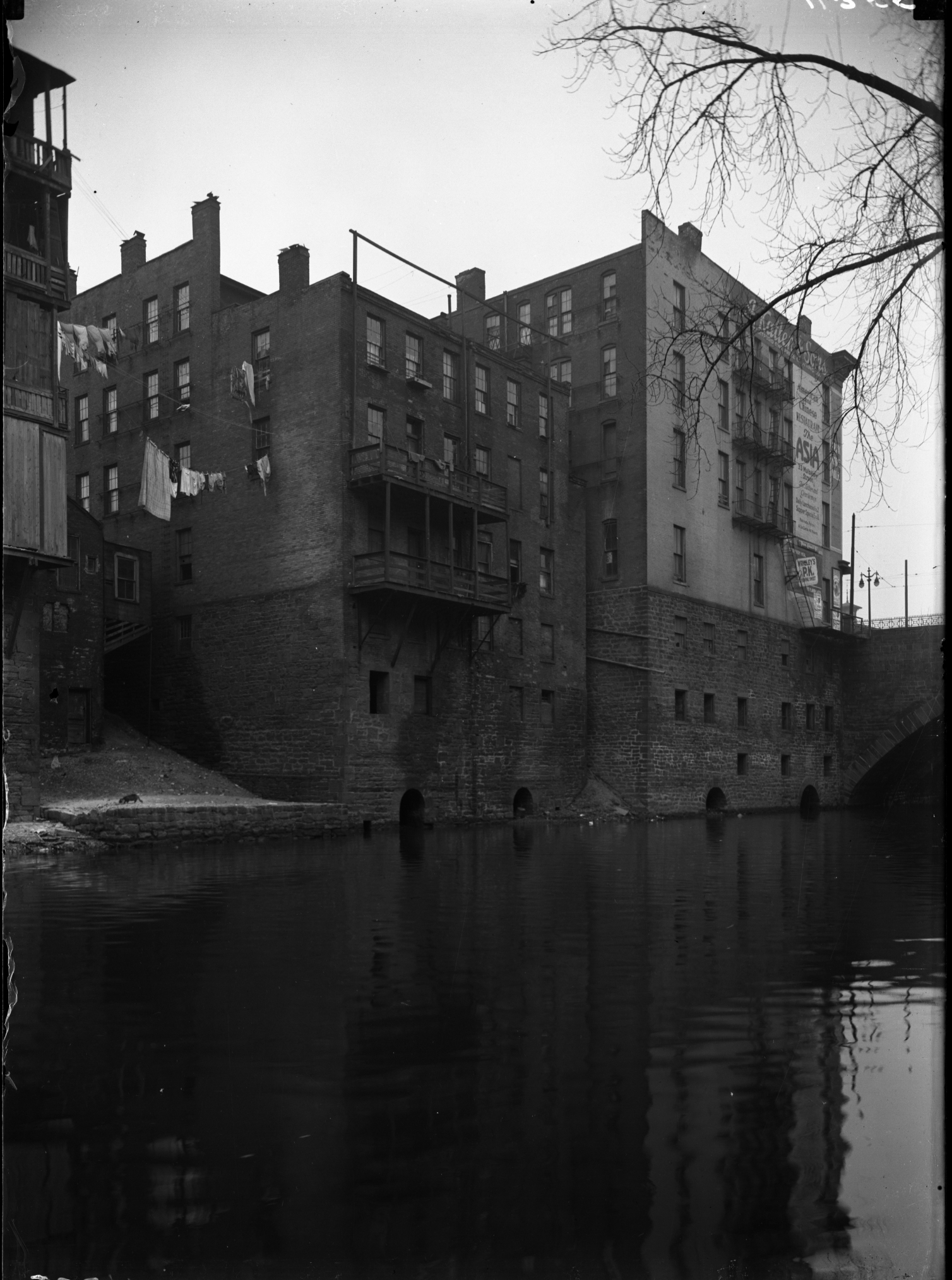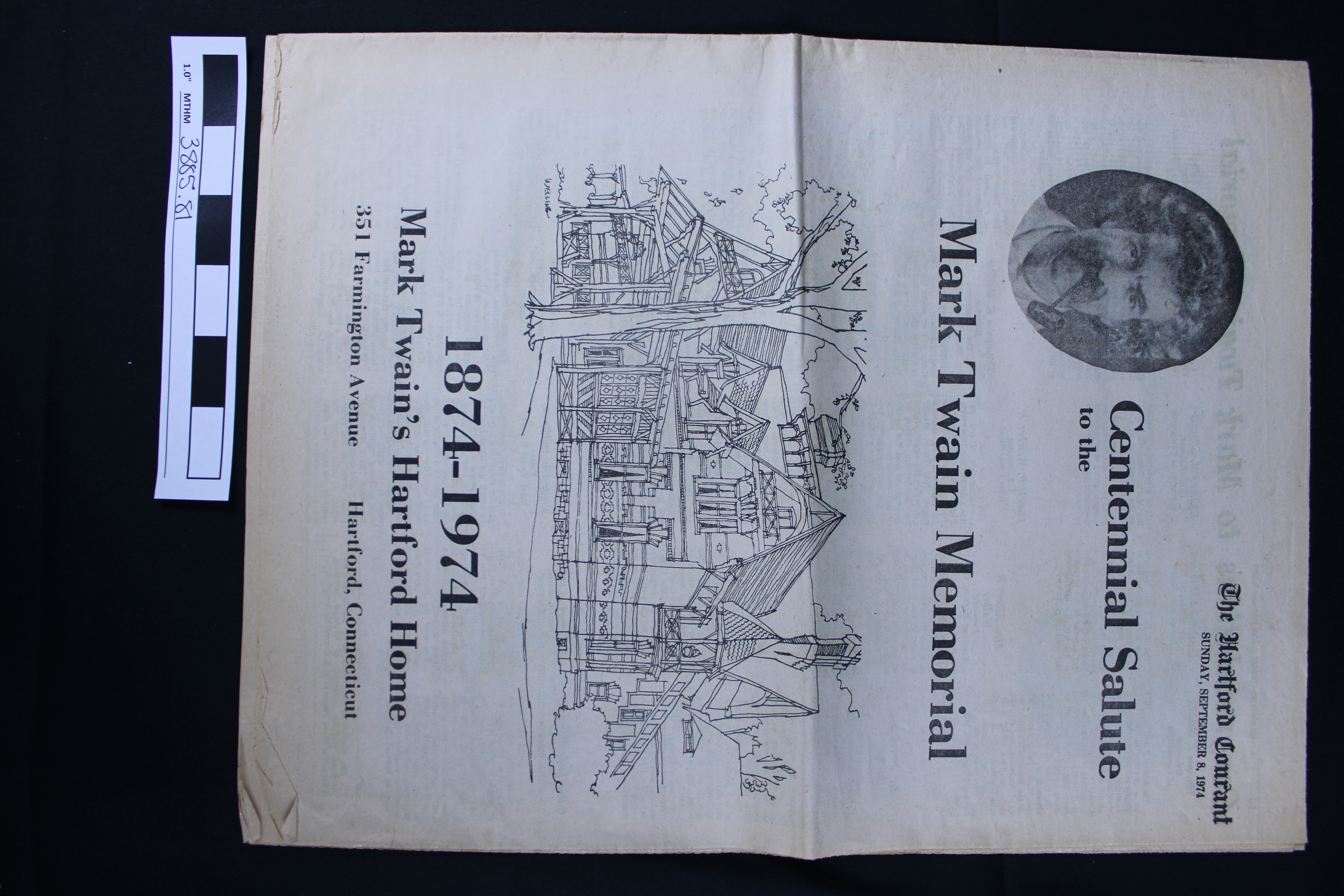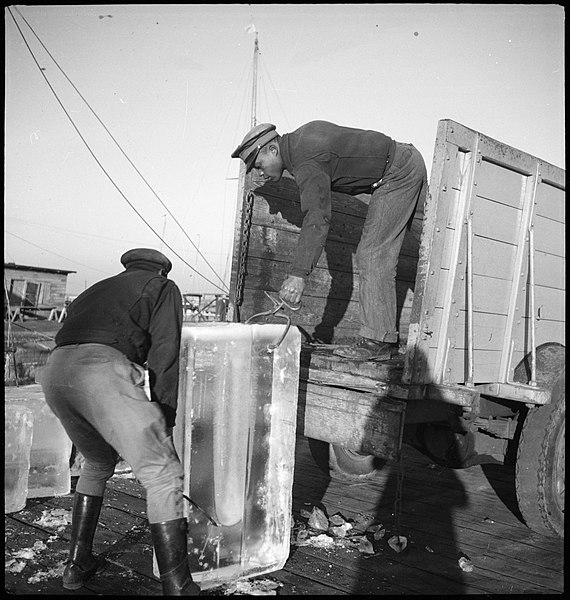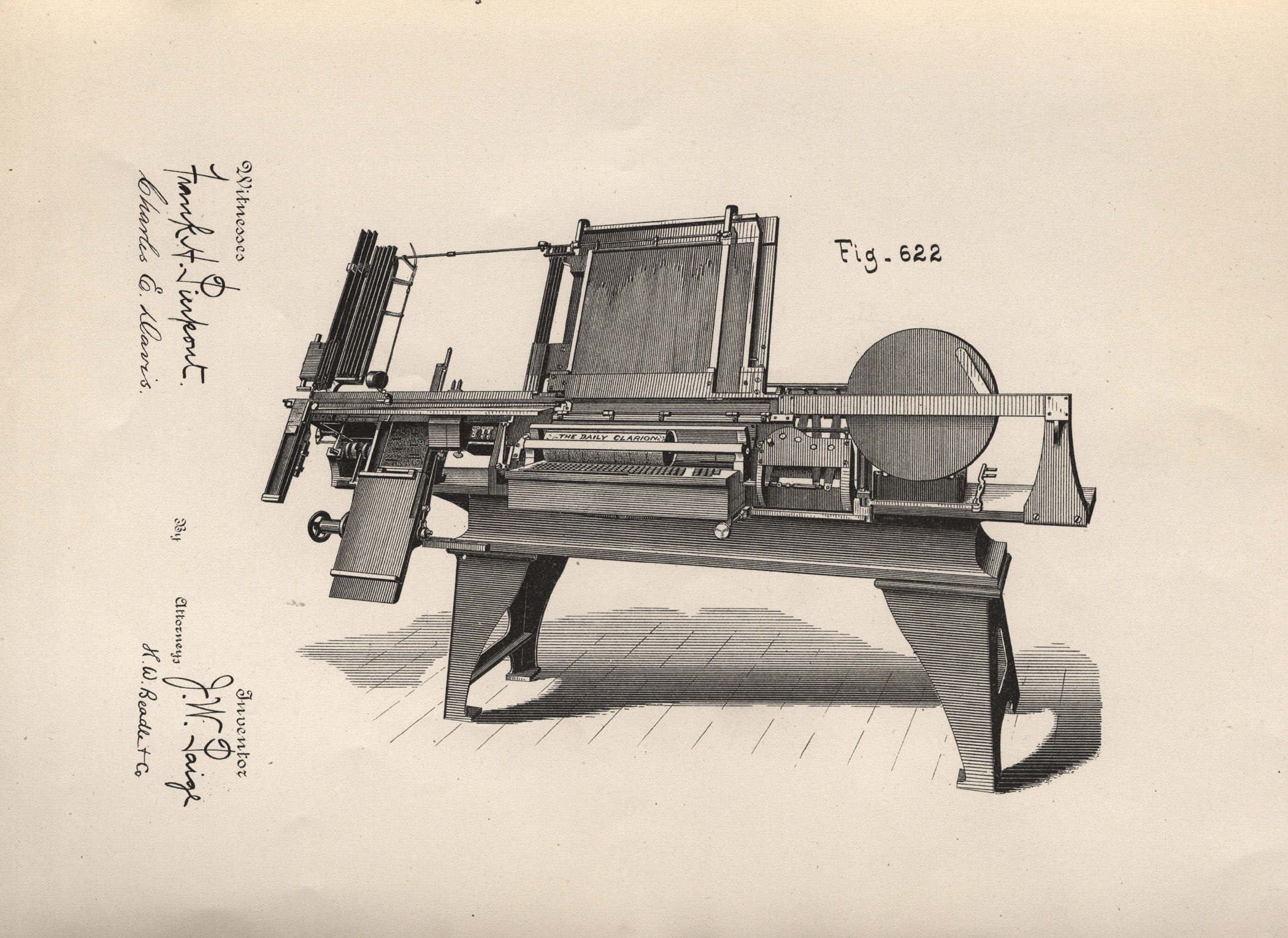Union Station
When Samuel and Olivia Clemens moved into their new Hartford House in 1874, they would have been greeted by the city’s first train station, Union Depot. This first station was designed to reflect an Italianate country villa, with arches, towers, and columns. The design was reflective of the opulence of the era and physical manifestation of Hartford’s claim to an elite status. The tracks ran through the center of the building and serviced two lines. Unfortunately, Union Depot was designed with style over substance and soon became too crowded and could not keep up with the demands of the bustling city.
The second station is the building you still see in Hartford today. Hartford’s Union Station opened to the public in 1889 and was designed with function in mind to better serve the growing city. The tracks were moved to a second story level so that they didn’t interfere with the carriage traffic on the streets below. The new station also increased the number of lines being served from two to four, giving the residents of Hartford greater access to locales all over the country.
For the 17 years that Samuel Clemens lived in Hartford, he was constantly traveling, building his career as a writer and performer, through a series of lectures that went along with the books he wrote and published. These lectures helped support him and his family financially as a stand alone gig, but also helped sell his books, and more importantly helped to establish Mark Twain as a well known name, and a brand.
Clemens was an innovator in brand extension and brand management. He was also very conscious of the word as well as the image. Clemens, through the persona of Mark Twain, was at the forefront of freelance side-hustle culture where creativity and capitalism collided. For Clemens this meant always traveling to the next speaking engagement, looking for the next business opportunity, and being away from his family.
In his day, Clemens would travel by carriage the one mile from his Nook Farm home to Union Station, to catch a train to places near and far. But, Clemens was not a fan of rail travel. He wrote in 1906: “The long railway journey from Dublin [New Hampshire] last Wednesday destroyed me for 7 whole days! —both mentally & physically; & there’s been heart-burn enough to almost move me to take out a fire-policy.”
Throughout his life Clemens traveled extensively around the United States and as a keen observer of the people and places around him, he turned every encounter into source material for his creative works. Today we think of Twain as the quintessential American voice, but let’s not forget the abundance of unseen voices that lie behind him, including his wife, daughters, family, friends, servants, business associates, and every random person he found interesting.

